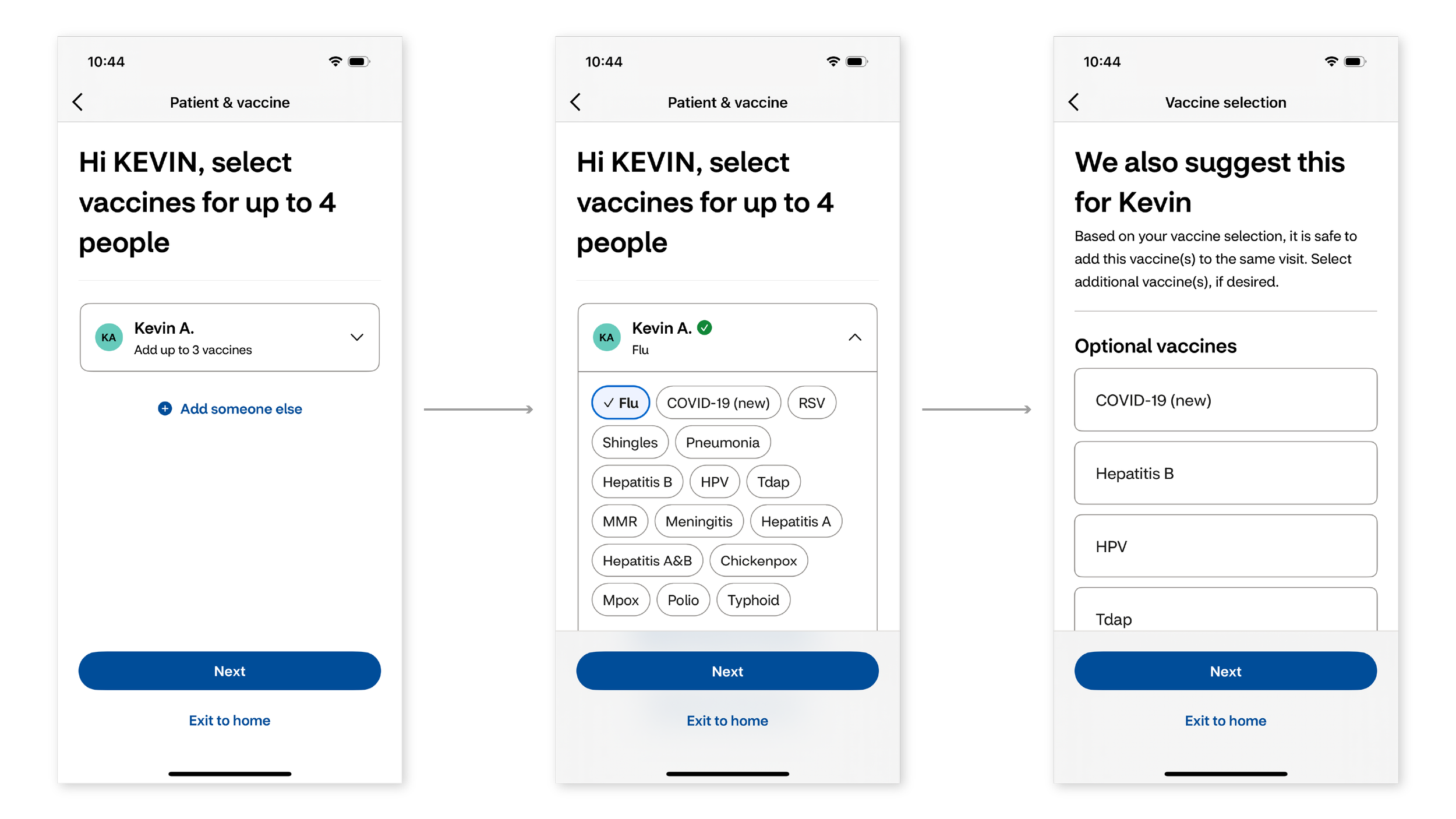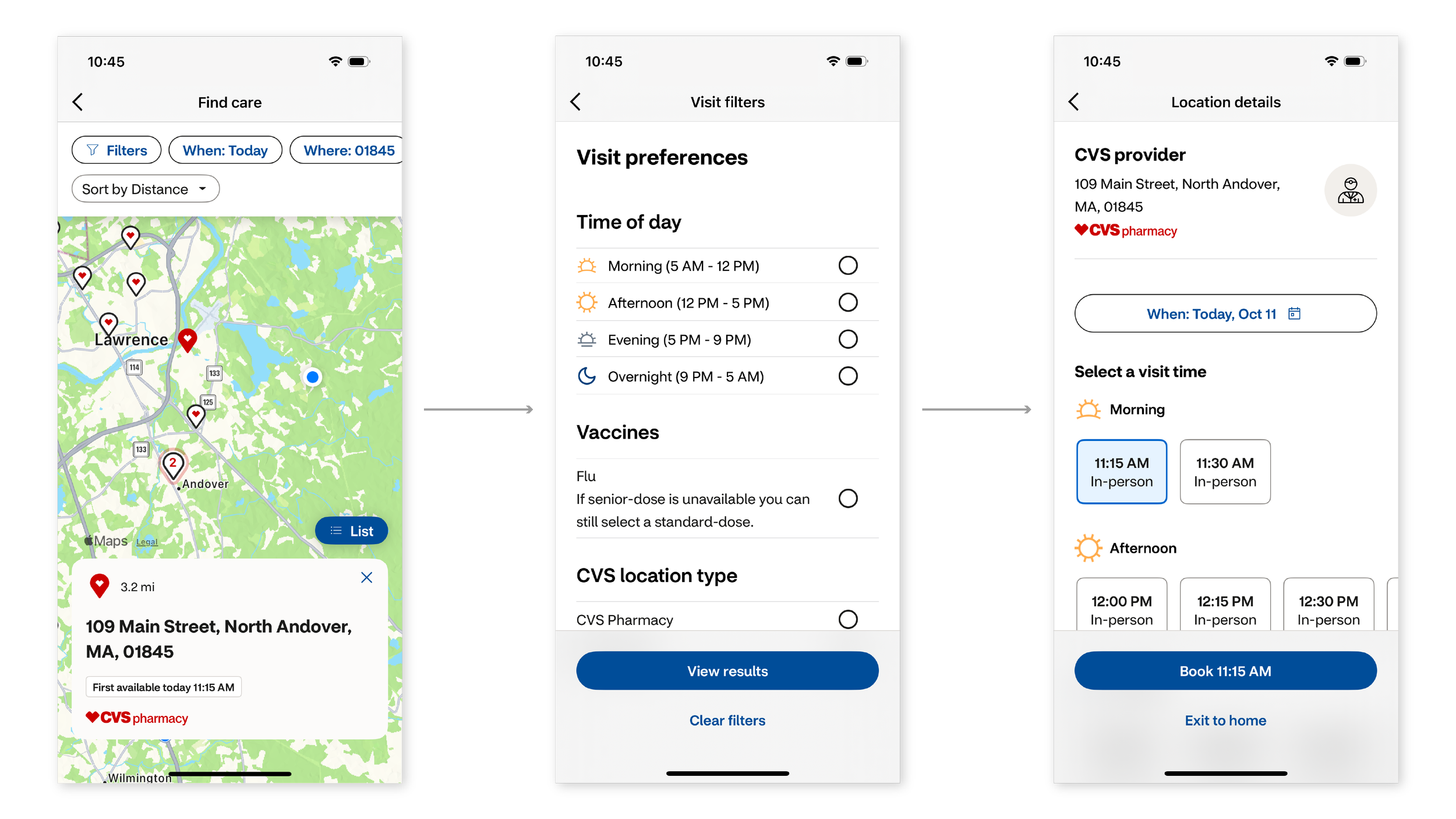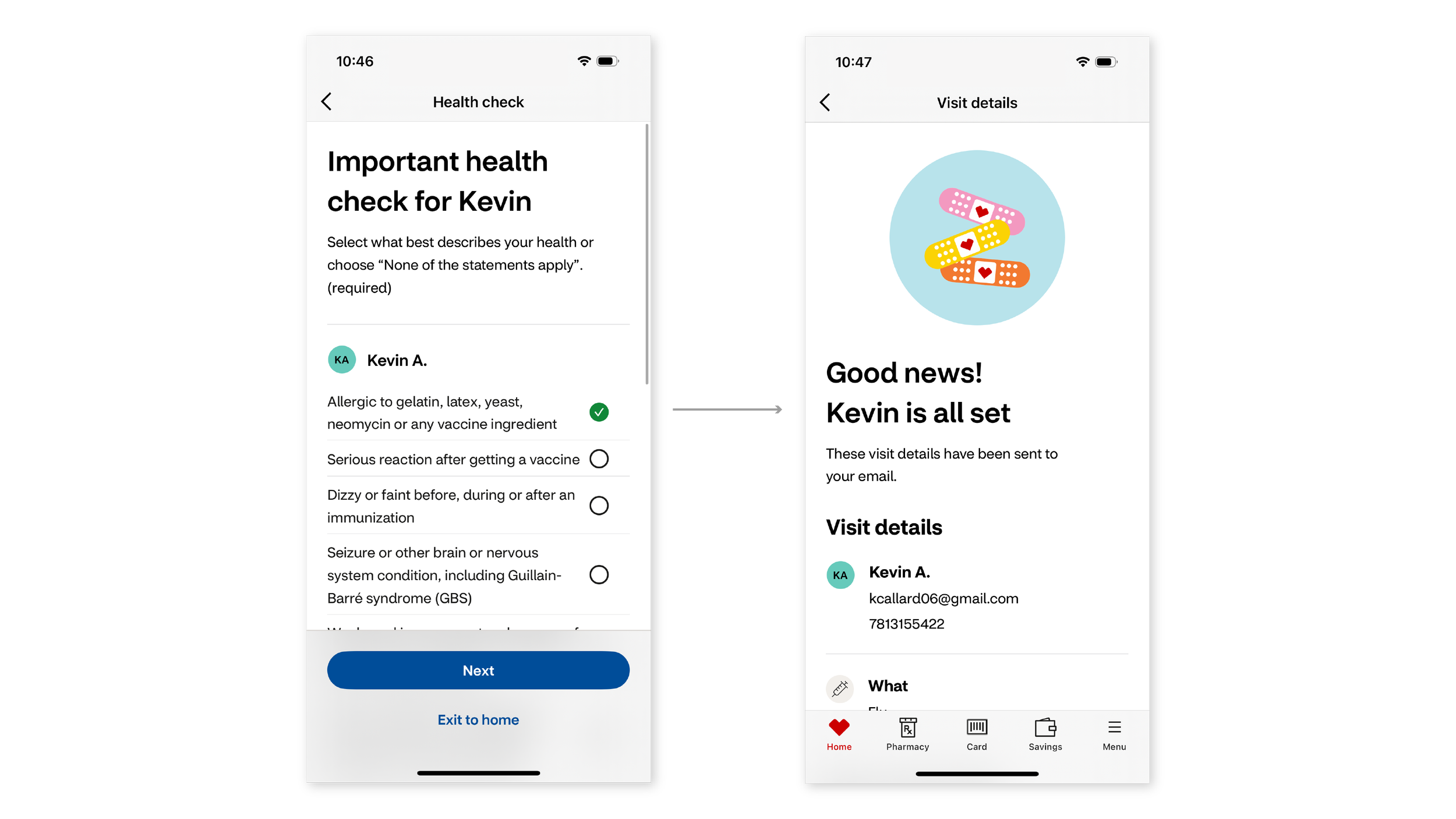CVS Next Gen Scheduler
In 2024, I managed a team at CVS who embarked on a complete re-engineering/unification of the UX/UI of our Scheduling experience for areas including Minute Clinic, Immunizations, Primary Care, Mental Health Counseling, Virtual Care, etc.
Overcoming challenges
-
This undertaking was of the highest priority to Leadership and Executives alike at CVS. There were constant Design Reviews with C-level Executives that I has to orchestrate, and prepare for with my direct reports. Often time the feedback from Executives contradicted previous guidance or input from other Leaders. It was my job to ask questions, suggest alternatives, and rally the team around making these changes in rapid succession.
-
As the Design Manager of the sole team that would be completely re-inventing all of these scheduling experiences, it was my responsibility to intake, understand, and assign the work to the right Designers in order to ensure XDs with the right experience, working style, and skill set were taking on the work.
-
Because things were moving at such a fast pace, and Leadership had their finger on every piece of work my team touched (not the norm!), Designers quickly became discouraged. It was my job to keep the team morale high via offering them more 1-1 time with me, recognizing their achievements and small wins, and helping Designers to pace their work out when so much was being asked of them.
-
On a day-to-day basis my team was tasked with solving complex UX scenarios without time to properly test and garner feedback from our users. Because we were introducing many novel patterns, this made our intuition and past experiences all the more valuable.
We had to take an approach of taking educated guesses, with a plan to quickly iterate and remediate any low-performing parts of the flow once the work went into production. -
Because there was so much work being done all at once, there was also a ton of work being delivered to our Developers all at once!
This led to lots of QA work needing to be done simultaneously on brand new long complex flows across 4 platforms, leveraging 4 brand new Design toolkits.
I helped to relieve some of pressure of this process bottleneck by completely turning our QA strategy on its head. Instead of having my Designers manually log each individual defect in our Scaled Agile platform, we implemented Design:Developer pairing, where an XD and Developer could sit down in a room together and QA/make code changes in real time. This dramatically sped up our QA process, and helped us to achieve 100% pixel perfect compliance on 100s of defects.



